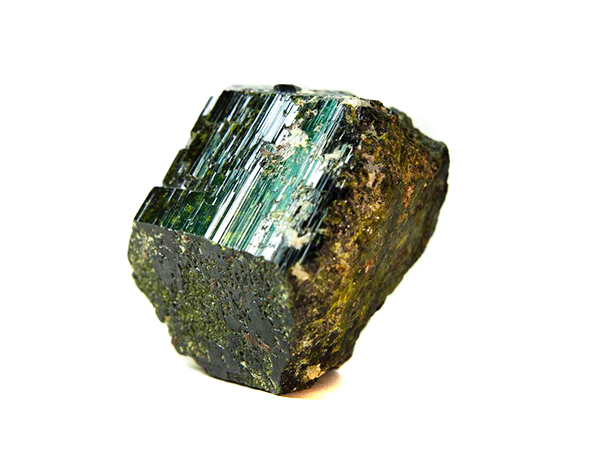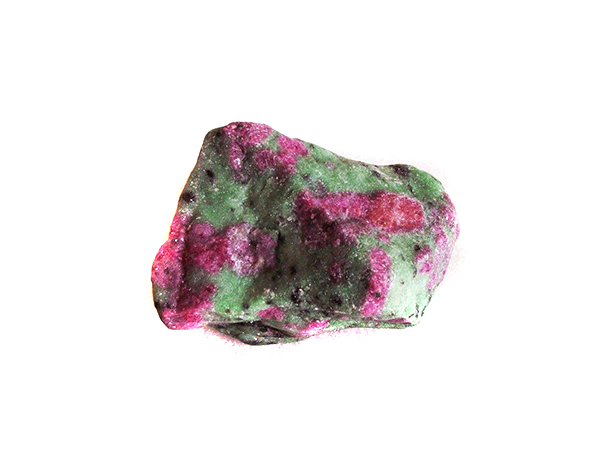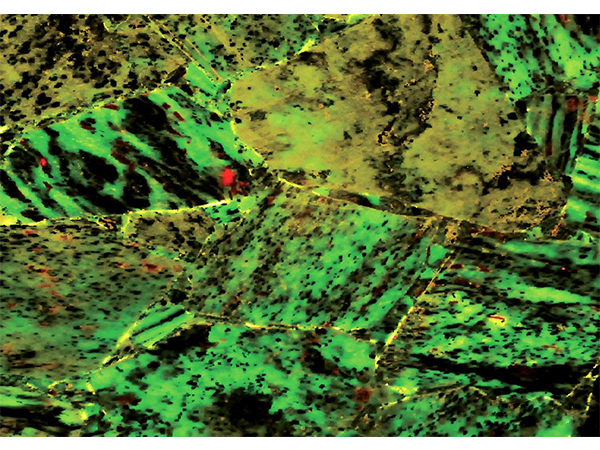EPIDOTE

Name source
The name epidote may be derived from the Greek epidosis, meaning growth, which means that its crystal side is longer than the other side. The composition is: Ca2FeAl2[SiO4][Si2O7]O(OH)
Detailed introduction
The crystal belongs to the monoclinic island structure silicate mineral.
The trivalent iron in the composition can be completely replaced by aluminum, which is called the slanting scutellite, forming the smectite-slanted scutellite stone. The orthogonal (orthort) crystal system is more homogeneous. The elephant variant is called the zoisite. The attapulgite with high manganese content is called red curtain stone.
The crystal of epidote is columnar, the columnar surface is striped, and the aggregate is often granular. The color is grass green in various shades. With the increase of iron content, the color becomes darker, the glass is shiny, and the bottom surface is completely cleaved. The Moss hardness is 6-6.5, and the specific gravity is 3.38-3.49, which increases with the increase of iron content.
The attapulgite can be metamorphic and is more common in green schist. In the skarn that is in contact with the genesis, the attapulgite is often transformed from early skarn minerals such as garnet and Fushan. Epidote can also be a product of wall rock alteration.
The formation of epidote is related to the hydrothermal action. It is widely distributed in metamorphic rocks, skarns and various igneous rocks that are affected by hydrothermal fluids. It can also be crystallized directly from the hot liquid. China's Hebei Province produces a large crystal of green sapphire.
chemical components
The number in the crystal form of the epidote can be greater than 1, and is called iron-rich opal. The attapulgite and the slanting zoi stone can form a complete series of the same image. When the iron in the slanting scutellite is gradually replaced by aluminum, it transitions to the attapulgite.

Characteristics
The octahedrons are connected in a co-edge manner into a chain extending along the b-axis direction, and the chain is also conjugated with the octahedron to form a folded chain; the chains are connected by an isolated tetrahedron and a double tetrahedron, and the chains are large. The void is filled with an irregular eight-coordinate polyhedron. The difference between the crystal structure of the slanted zoisite and the attapulgite is that the occupied octahedral voids are all replaced by.
Crystal morphology
The crystal is often columnar and extends parallel to the b-axis. The crystal faces on the parallel b-axis ribbon have significant streaks. Can be (100) into a polycrystalline twin. The reason why the attapulgite often appears to extend the parallel b-axis, (100) the more developed plate-like crystals are related to the octahedral chain extending parallel to the b-axis and the parallel (100) chain layer formed by the structure. In addition, it is often a columnar, radial, or cluster-like aggregate.
Physical properties
Hardness: 6-6.5
Specific gravity: 3.38-3.49
Cleavage: (001) complete cleavage
Fracture: not neat
Color: gray, yellow, yellow-green, green-brown, or nearly black, the color becomes darker with increasing content, and a small amount of Mn is replaced by a similar image to make the color different in color;
Streak: not obvious to gray
Transparency: transparent to translucent
Gloss: glass luster
Density: Relative density 3.38-3.49 (larges as the Fe content increases).
other
When rotated, the translucent attapulgite prism exhibits strong dichroism, that is, in one direction, the color is dark green; and the other direction is brown.
Cause of occurrence
The formation of epidote is related to the hydrothermal action (mainly equivalent to the mid-temperature hydrothermal stage), which mainly forms the green curtain petrochemical, that is, the original magmatic rock, metamorphic rock and sedimentary rock formed by a hydrothermal fluid.

Identification feature
Columnar crystal forms, distinct facet stripes, a set of complete cleavage in parallel (001), and characteristic yellow-green color can be distinguished from similar olivine and hornblende.
The main purpose
In industrial applications, epidote generally has only mineralogical and petrological significance. The attapulgite is an emerald primary ore, and the transparent crystal can be ground into a rare and rare faceted gemstone.
Main producing area
Salzburg, Princes Island, Alaska, Adams District, Idaho, Carumante Iron Mine in Chaffey District, Colorado, and Lvbelite Mountain in Parker District; Mexico; Switzerland; Austria; Pakistan. The fascinating spar of Bosedo Sands, France.
Evolutionary stage
In the process of regional metamorphism, the green chlorite formed by the early green horn amphibolite facies metamorphism stage is characterized by high iron content, to the metamorphic stage of the coesite eclogite facies metamorphism stage and the quartz eclogite metamorphism stage.
The chemical composition of the epidote formed continuously changes, and the relative rich content of the core is low, mainly formed in the metamorphic stage of the coesite eclogite phase; the content of Fe2O3 in the edge is low, 9.628-10.138%, XFe=0.275- 0.286, mainly formed in the quartz eclogite phase metamorphic stage; the laterite metamorphic amphibolite facies formed by the olivine, its chemical composition is similar to the green curtain amphibolite facies metamorphism stage, high salinity (22.5wt% NaCl The aqueous solution inclusions to slightly more than 23.2wt% NaCI) are formed in the metamorphic stage of the coesite eclogite phase, and the aqueous inclusions of medium and high salinity (12.6-16.0wt% NaCl) are formed in the quartz eclogite metamorphism stage, while medium A solution inclusion of salinity (6.4-11.7 wt% NaCl) is formed in the amphibolite facies metamorphism stage.
The study of fluid inclusions in epidote has confirmed that there is no large-scale fluid action in the ultrahigh pressure metamorphism and the later reentry process, and the activity of the metamorphic fluid is limited to the range of mineral crystal particles.
Research tracking
Epidote is an aqueous mineral that can be stably present during the peak period of UHP metamorphism. Because of its stable temperature-pressure conditions, changes in its composition can indicate the deterioration process and conditions. The systematic petrographic observation and the study of the main and trace elements of the Chinese Continental Scientific Drilling (CCSD) core and the Qinglongshan eclogite and the olivine in the positive and secondary gneiss indicate that the attapulgite has many causes. During the process of subduction and metamorphism and reversion and metamorphism, there are epidote formations, and each stage can be divided into multiple generations. The variation of the main elements in the epidote is concentrated in the variation, and the XFe value is a function of the deterioration conditions (temperature, pressure, oxygen fugacity).
XFe is the sign of the metamorphism of the nucleus to the edge of the chlorite, and the epiducal process is reversed. In the process of degenerative process, the REE of Smectite and the large ionic radius elements such as Sr, Ba and Pb have a tendency to decrease compared with the core.
The nucleus of the chlorite in the sub-gneiss contains mostly When the brown pebbles are turned into epidote, the ∑REE is sharply reduced, and the chondrite distribution pattern is gradually changed from the LREE enrichment type to the flat type in which LREE and HREE are not significantly different. The characteristics of these trace elements are unlikely to originate from the water/rock reaction between the metamorphic fluid/mineral, and are most likely the result of partial melting during the plate reentry process. Epidote is also a suitable carrier mineral for large ionic radius elements such as REE, Sr, etc., which circulate to the deep crust and mantle.
